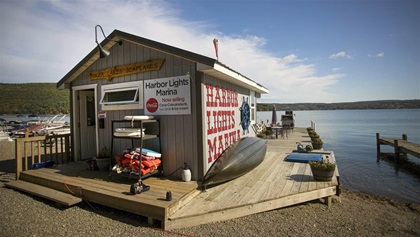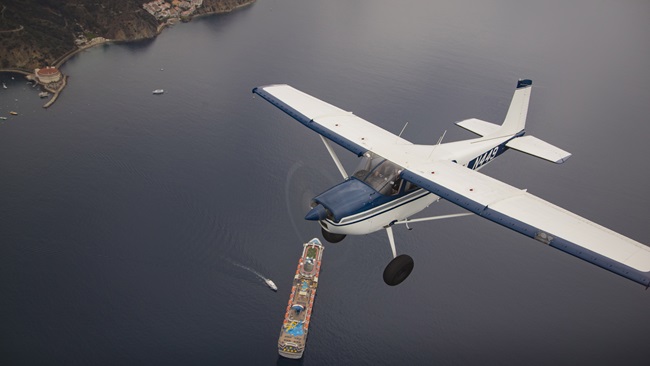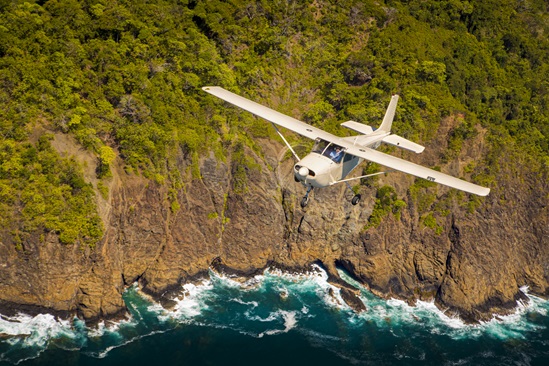Destination Finger Lakes: Orville and Wilbur who?
In Hammondsport, Glenn Curtiss is the man
Although Glenn Curtiss probably never would have imagined 140-foot-long airliners streaming overhead when he introduced his June Bug and early seaplane designs, the town in which his innovations first debuted in 1908 seems caught in time, a dragonfly in amber.
Hammondsport, New York, situated on Keuka Lake (pronounced Q-Ka), one of the 11 Finger Lakes in upstate New York, once was home to the “fastest man in the world” and is yet another “birthplace of aviation” (although the area refers to it as the “cradle of aviation”). Curtiss flew the first announced public flight of a heavier-than-air flying machine in America and received Aviator license no. 1 from the Aero Club of America in 1911. So, it’s no wonder that the T-shirts in the gift shop of the museum in his honor read, “Orville and Wilbur Who?”
For aviation buffs, Hammondsport and the surrounding Finger Lakes area is a mecca. Even a road sign on the interstate lists aviation attractions. There are several museums and the “Soaring Capital of America,” but it is Glenn Curtiss who dominates the landscape. As well he should. Born in Hammondsport in 1878, Curtiss was obsessed with speed. Like the more famous Ohio brothers, Curtiss also began his career in the bicycle business. Bicycles, once called velocipedes, were introduced at the Paris Exposition in 1867 and by 1868 they were a craze—velocipedomania—in the United States. Small U.S. manufacturers filed more than 250 patents for the bicycle, including the “safety” bicycle and the “ordinary” bicycle. By the 1880s, bicycling was the most popular sport in the nation.
Curtiss was a Western Union bicycle messenger, a ferocious bicycle racer, and owned a bicycle shop. An inventor, he attached a 4.4-liter V-8 engine on a bicycle and set a record of 136 miles per hour on that motorcycle in 1907, which at that time was faster than anything on land, sea, or in the air.
Now acknowledged as an expert in engines, Curtiss turned his attention to the newest craze: aeroplanes. On July 4, 1908, crowds gathered in Hammondsport to see their first airplane. The pilot was Curtiss, sitting in the front of a bi-wing on bicycle wheels. At his back was an eight-cylinder, 40-horsepower engine he designed. His friend Alexander Graham Bell called the contraption the June Bug after all the beetles in the little lakeside town. Curtiss motored the aircraft down a muddy horse track and rose 20 feet off the ground, flying the craft for 5,090 feet. He was awarded the Scientific American Trophy, and the publicity overshadowed the latest feats of the Wright brothers. While Curtiss was awarded the first Aero Club of America pilot license it was not because of that flight; it was in alphabetical order and the Wrights had the wrong name.
Finger Lakes












Bell was a fan of Curtiss and called him “the greatest motor expert in the country.” Bell and his wife, Mabel, funded the Aerial Experiment Association (AEA) and Curtiss was its director of experiments. Thomas Selfridge was a member. When Orville Wright demonstrated the Wright Flyer in September 1908 in Arlington, Virginia, Selfridge was his passenger. The crash of the aircraft killed Selfridge (the first fatal airplane accident) and the AEA disbanded.
Curtiss was called upon to build an aircraft for the Aeronautical Society in New York and he modified the June Bug, shortening the wings and adding ailerons, as well as painting it yellow, to sell the Gold Bug for $5,000. The sale angered the Wrights, as they believed their U.S. patent granted them a monopoly. The brothers sued the Aeronautical Society and demanded the Gold Bug be destroyed.
The lawsuit lasted for eight years as both Curtiss and the brothers continued to achieve success in new designs, especially Curtiss (flying boats, the JN–4). The feud ended with the start of World War I. The U.S. War Department contacted Curtiss and Orville Wright and, according to history, told the two to come together. The settlement “took over the Wright and Curtiss patents and administered a cross-licensing agreement that applied to all members of the association,” according to author William F. Trimble. The Wrights and Curtiss each received $2 million in royalties (worth $32 million today). The Curtiss-Wright Corp. was formed in 1929. Curtiss moved to Florida where he established 18 more corporations, before he died in 1930 at age 52.
A walk through the 60,000-square-foot Glenn H. Curtiss Museum will illustrate this tale and much more of Curtiss’s rich history. There are more than a dozen aircraft, motorcycles, automobiles, and more housed in a former winery building.
The Finger Lakes region is a summer resort area with boating and swimming as the draw, and a fall destination for leaf peepers and winery tours. For outdoorsmen, there are waterfalls, hiking trails, canyons, and ski areas. The 11 lakes—so-called because the long slim lakes look like fingers—are situated between Syracuse and Rochester, New York. Seneca is the deepest and Cayuga is the longest. Native Americans believed the long north-to-south lakes were the fingers of The Great Spirit touching the Earth.
Hammondsport is located at the southern end of Keuka Lake. Unlike its other lake brothers, Keuka is Y-shaped and was once called the “Crooked Lake.” The 20-mile lake is the home of Finger Lakes Seaplanes (see “Two Men and a Seaplane,” p. 63), which offers the added pleasure of flying over the many wineries of the Keuka Lake Wine Trail. From the air is a marvelous way to see the cascading vineyards flowing down the sides of the cliffside lake coastline.
New York is steeped in wine history. From as early as 1829, the area has produced wine. Konstantin Frank, a viticulturist from Ukraine, discovered the shale-filled soil was perfect for producing bone-dry, crisp Germanic wines such as Riesling. The lake waters affect the climate by keeping it warm in the winter and cooling the air in the summer, creating a long temperate period for growing grapes. There are more than 100 wineries throughout the Finger Lakes region, and more than 20 around Keuka Lake.
Penn Yan Airport (PEO) is situated at the northern end of Keuka Lake. It is home to one of the oldest flying clubs in the United States and the headquarters of Penn Yan Aero, the world’s oldest independent overhaul facility and a contributor to several AOPA sweepstakes projects over the years. PEO puts you in the heart of the Finger Lakes region, as Keuka Lake is at the center of the 11 lakes. It has two runways and self-serve fuel.
Located in the oldest building in Hammondsport is The Park Inn, which has the added pleasure of being decorated in an aviation theme. Owners John and Janet Rodenhouse have decorated the inn with Glenn Curtiss memorabilia. If you like to dine or sleep around aircraft artwork, models, and aviation history, this is the place for you. The Rodenhouses own Point of the Bluff Vineyards, where the Curtiss influence is also felt. Wine labels have historic Curtiss aircraft and its Hangar 17 White and Rose wines are sold in distinctive, Curtiss Jenny-emblazoned four-pack aluminum cans.
Email [email protected]


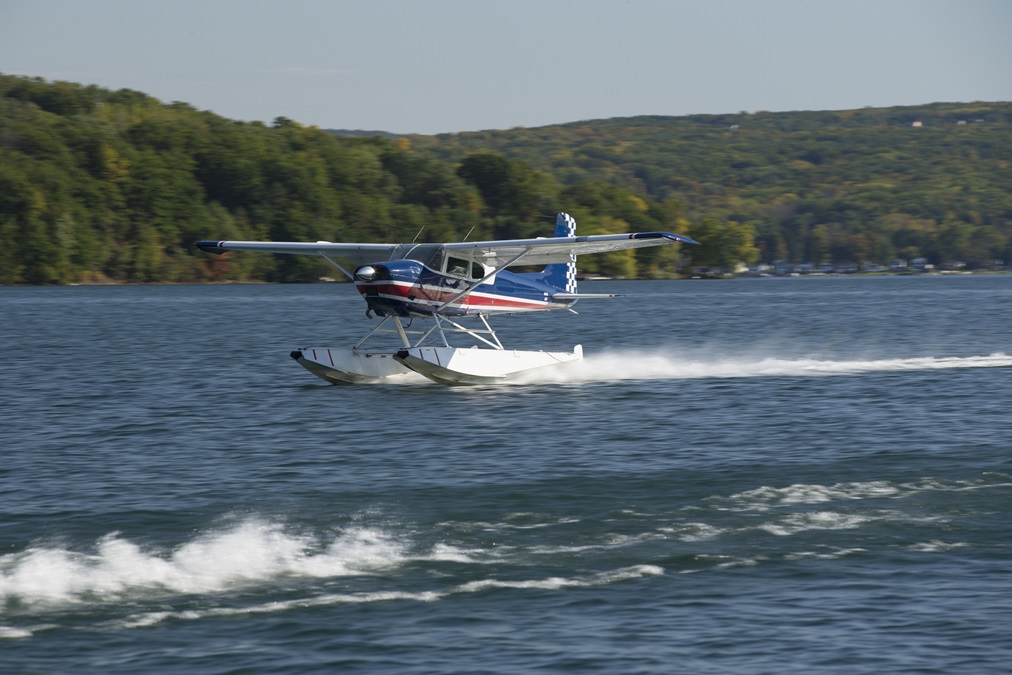

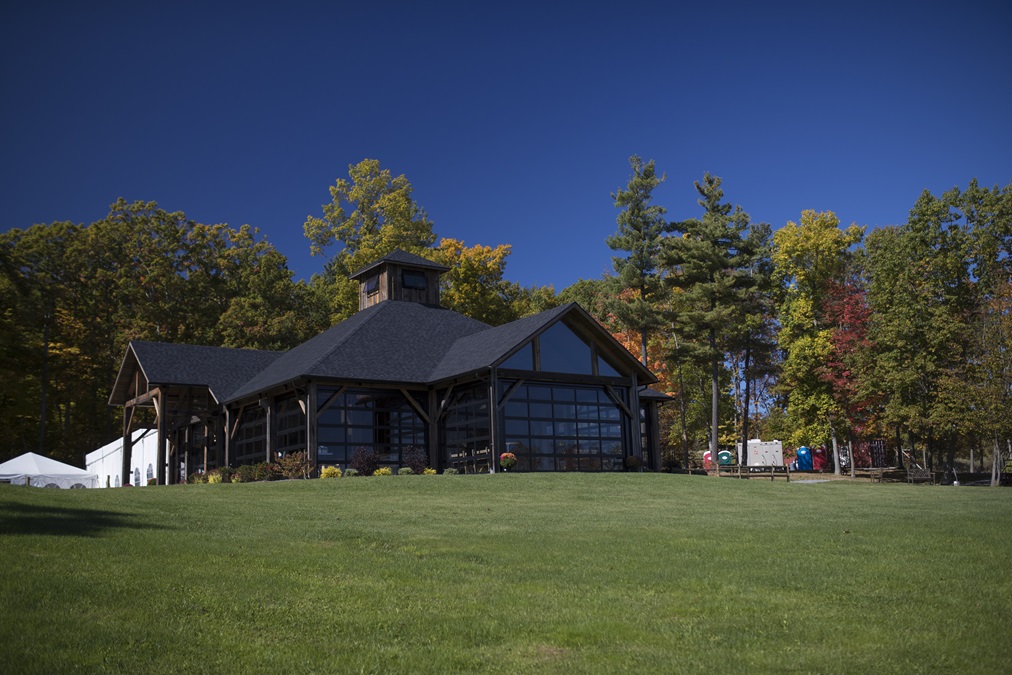


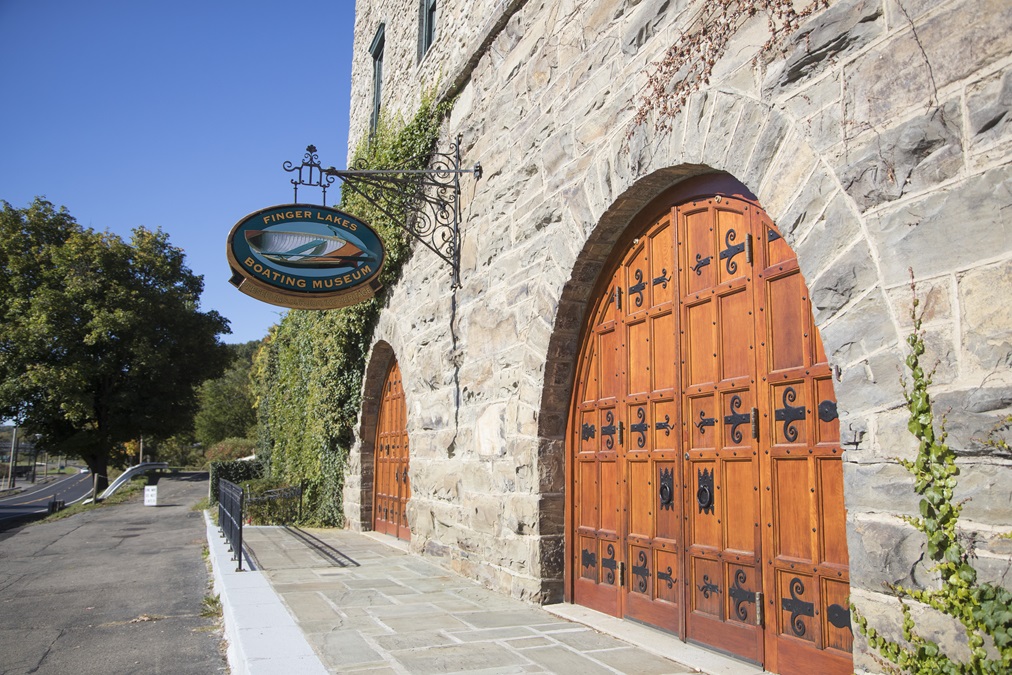
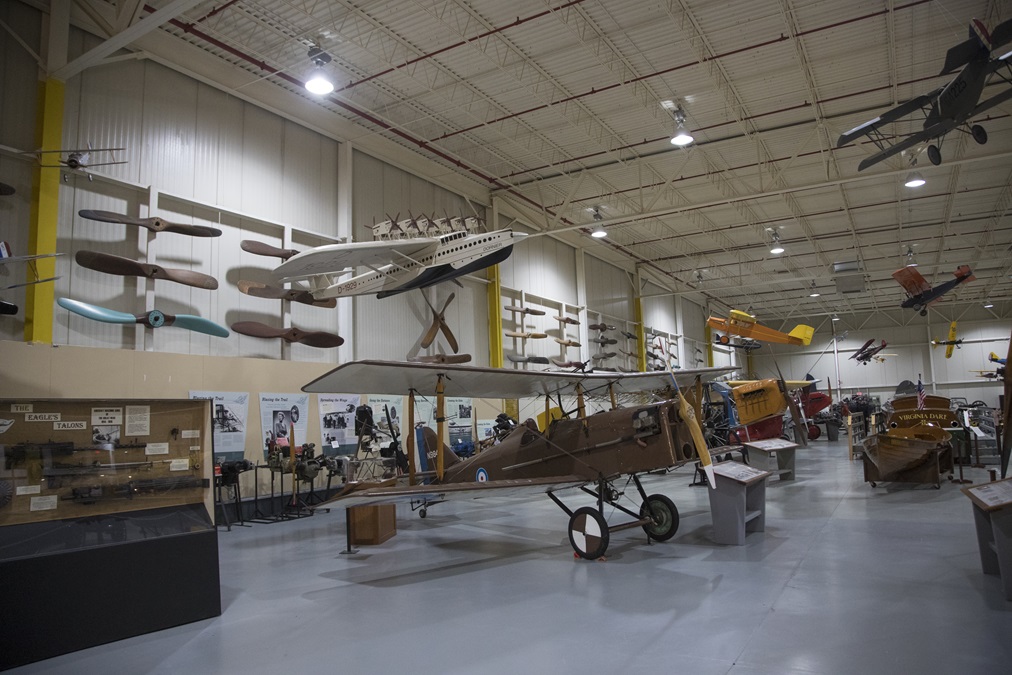
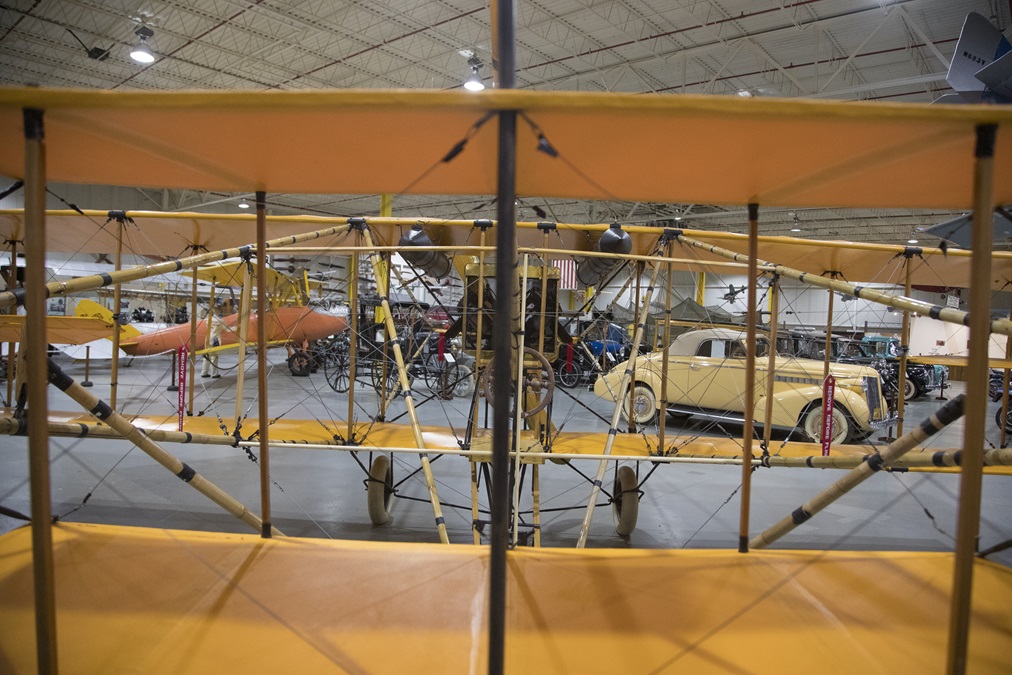

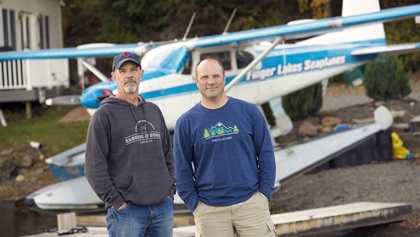 Dreams do come true—ask former AOPA employees Bob Knill and Andy Sable. While working at the world’s largest general aviation organization isn’t a bad gig, it’s not the same as owning your own business and flying every day for a living. That’s what the two friends and colleagues decided one evening in March 2017. Sable’s father owns a marina on Keuka Lake, New York, and Sable left AOPA to help in the family business. Knill, a former IT professional turned photographer and writer, longed to fly seaplanes. Both pilots—Sable learned as a teenager in the 1990s and Knill as an AOPA employee in 2005—share a love of flying, the lake, and being together. Their great rapport is a highlight of Finger Lakes Seaplanes, the venture the two friends started in spring 2017. They purchased a Cessna 180, N180PT, and now offer “tours of the most beautiful place on the planet.” The two pilots split their time flying and running the business with Sable’s wife, Tiffany, although Sable also flies for Corning Corp. so Knill is most often your pilot. They offer trips ranging from 30 minutes over the bluff to Penn Yan to 60-minute flights up Keuka Lake and over Watkins Glen and Seneca Lake or over Canandaigua Lake. Both give entertaining and interesting tours with a quirky sense of humor (Sable) or self-deprecating jokes (Knill). —JSW
Dreams do come true—ask former AOPA employees Bob Knill and Andy Sable. While working at the world’s largest general aviation organization isn’t a bad gig, it’s not the same as owning your own business and flying every day for a living. That’s what the two friends and colleagues decided one evening in March 2017. Sable’s father owns a marina on Keuka Lake, New York, and Sable left AOPA to help in the family business. Knill, a former IT professional turned photographer and writer, longed to fly seaplanes. Both pilots—Sable learned as a teenager in the 1990s and Knill as an AOPA employee in 2005—share a love of flying, the lake, and being together. Their great rapport is a highlight of Finger Lakes Seaplanes, the venture the two friends started in spring 2017. They purchased a Cessna 180, N180PT, and now offer “tours of the most beautiful place on the planet.” The two pilots split their time flying and running the business with Sable’s wife, Tiffany, although Sable also flies for Corning Corp. so Knill is most often your pilot. They offer trips ranging from 30 minutes over the bluff to Penn Yan to 60-minute flights up Keuka Lake and over Watkins Glen and Seneca Lake or over Canandaigua Lake. Both give entertaining and interesting tours with a quirky sense of humor (Sable) or self-deprecating jokes (Knill). —JSW 